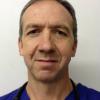Picture: Shutterstock
Varicose veins are often noted because they affect the appearance of the legs.
However, although around 30% of adults have varicose vein problems in their legs – only half of them can see varicose veins on the surface.
The other half have ‘hidden varicose veins’ deeper beneath the skin which they aren’t aware of.
Symptoms of hidden varicose veins
- Aching legs
- Swollen feet and ankles
- Phlebitis (inflammation of the vein)
- Eczema
- Red or brown stains on the ankles
- Leg ulcers
- Burning or throbbing in your legs
- Muscle cramp in your legs, particularly at night
How can I find out whether I have hidden varicose veins?
Hidden varicose veins can only be detected by a duplex ultrasound scan.
This scan is performed by a vascular sonographer and provides a detailed map of the vascular system, specifically highlighting the level of reflux in the truncal veins.
Consultant vascular surgeon Professor Stephen Black of UK Vein Clinic, says: ‘The introduction of vascular ultrasound (a duplex scan) has been a game changer for patients in terms of the quality of treatment they can expect to receive.’
He adds: ‘ Visible varicose veins are just the tip of the iceberg; the ultrasound scan looks at everything else. And can manage expectations as to the likely symptomatic and cosmetic success from treating the superficial veins. If reflux is present in the deep veins, we may still be able to treat the superficial veins, but the symptomatic improvement and cosmetic results may not be as good. It is important to remember that the scan is not to confirm the presence of varicose veins, but to understand how these smaller veins are fed by failures in the bigger, deeper veins.’
Am I at risk of varicose veins?
You are at risk of varicose veins if you:
- Are over 40
- Take the contraceptive pill or HRT
- Have relatives with varicose veins
- Are overweight or obese
- Have a history of a blood clot or damage to the vein
- Have a job that means you spend long periods sitting down
- Are on your feet a lot with your work
- Are pregnant
Both men and women are at risk of varicose veins, but women are twice as likely to be diagnosed with the condition.
Do varicose veins require treatment?
According to Professor Stephen Black, we should not ignore varicose veins. He says: ‘Varicose veins are often considered to be simply a cosmetic issue, however, it is very important to understand that they are a sign of vein disease and that this could progress to complications such as ulceration, blood clots (thrombosis) and in the worst case scenario a blockage in the lungs (pulmonary embolism), which can be fatal.’
What treatments are available for varicose veins?
Using surgery to strip varicose veins is no longer the preferred method of dealing with this condition. Specialised, minimally invasive thermal treatments using radio waves — Radiofrequency Ablation surgery, and thermal coagulation using the Veinwave technique are now available and are currently proven to offer the best available outcomes for patients (as recognised by National Institute for Clinical Excellence). Alongside these radiotherapies, Micro and Foam Sclerotherapy may also be appropriate.
Professor Black comments: ‘All treatments, thermal or non-thermal are minimally invasive, which means faster recovery, lower complication and recurrence rates compared to the traditional method of stripping.’
Read more ...
- Why it's important to treat varicose veins
- Diagnosing and treating varicose veins accurately
- 7 dangers of sitting down too long








